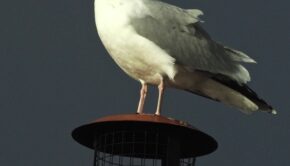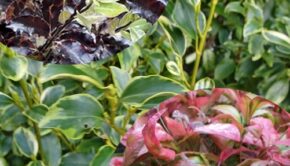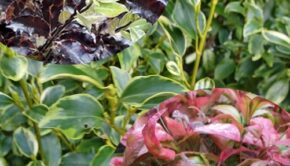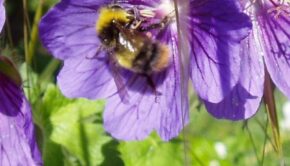What are “Invasive” plants?
Many plants that we grow in our gardens spread vigorously by stems (like Mint) or self-seeding all over the border (like Poppies), but not all are officially defined as “Invasive”. The full title for plants that are a problem is Non-native Invasive Species and that problem is that they readily escape from our gardens where they might be fine into the natural environment where they out compete the native plants that are a vital part of the habitat.
It is an offence to sell, spread or allow to be spread a (fairly small) number of designated plants because the impact on our native flora and fauna is so disastrous. Many gardeners will have heard about pond plants that were once sold as oxygenators but that we now know will choke rivers and streams if ‘allowed out’ and are now banned. Parrot’s Feather is a good example of this. On land possibly Japanese Knotweed is the best known and certainly no-one would want to buy or plant this nowadays, although it was introduced as an ornamental plant in Victorian times.
Less well known is that some plants that are still widely grown and admired in our gardens are also starting to run riot in the countryside: Skunk cabbage (Lysichiton americanum) looks striking alongside a pond but rapidly spreads downstream along river banks overwhelming everything else. And the basic mauve Buddleja davidii is now listed as a non-native invasive too. It sheds huge quantities of seeds, all of which seem to germinate and will even grow straight out of a wall. It has come to dominate railway lines in urban areas. However, there is good news for butterflies because there are many named varieties of Buddleja, the Butterfly Bush, in lovely colours, that do not produce viable seeds and do not spread.
All of this might not be the most inspiring topic but it is important information for gardeners. There is no value in looking after a garden if we do not look after our environment too. There is a lot more information on this subject at www.nonnativespecies.org
Prairie planting
Prairie Planting has been growing in popularity for a decade or so now and is a slightly new take on the traditional Herbaceous Border, but with less effort. The aim is to provide flower power throughout the summer and right into autumn and end up with a good number of plants that will dry off but remain upstanding all winter. Cultivated flowers and ornamental grasses are planted in large drifts, groups of five or seven of the same variety. Close planting and careful choice of varieties mean no staking, fertilising or weeding. Maintenance is limited to mass dead-heading and cutting the whole lot down in early spring. Clump forming perennials are ideal: Bergamot, Achillea (Yarrow), Echinacea, Astrantia, Michaelmas daisies and Phlox. The list is almost endless. Eryngium (cultivars of our native Sea Holly) spiky and petrol blue looking great with bronze or purple grasses. There is no shortage of ornamental grasses available these days, but avoid any that are described as ‘vigorous’; you just know that it will end in tears
Happy Gardening, Alison
Alison Marsden lives in Southborough providing advice to gardeners onsite and online. She teaches for Kent Adult Education Services and gives talks to clubs and societies. Her most popular topics are available on video from the website.
There is no long term commitment – just all the advice you need an hour at a time. Find out more at www.gardeningbydesign.co.uk or call 07803 045327






Comments